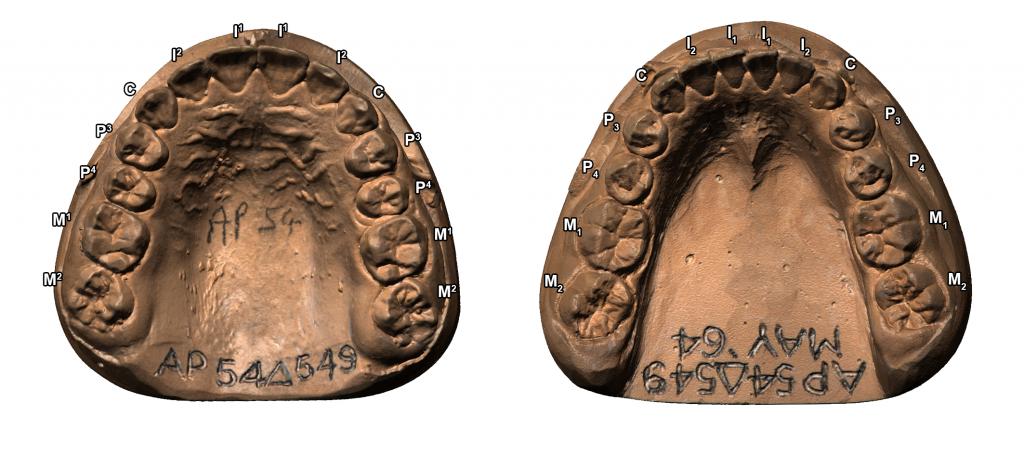The aim of this study is to provide a set of longitudinal quantitative data within a functional context obtained from the analysis of molar macrowear patterns of children and young adults based on the Occlusal Fingerprint Analysis method. We examined the mixed dentition of Australian Aboriginal children taken from the Yuendumu longitudinal dental sample, which consists of measurements, radiographs, family data, and 1717 sets of dental casts representing 446 individuals, collected between 1951 and 1971.

Our results suggest that the occlusal macrowear patterns did not significantly change through time. Occlusal contact parameters such as functional area, inclination and directional data, remain relatively unaltered throughout childhood and young adulthood, indicating little changes in the masticatory function. This could be related to a compensatory mechanism of the human dentition to resist any changes that could disturb masticatory efficiency. To date, there are no studies in modern humans that demonstrated that dental functionality is maintained through time even in more advanced wear stages. Only a few dental topographic studies in non-human primates and other mammals have shown that masticatory efficiency is maintained throughout the wear sequence. Thus, tooth wear seems to generally keep teeth mechanically efficient for chewing foods of various consistency during the lifetime of an individual. Biomechanical studies have indicated that tooth wear helps to dissipate the mechanical load over the crown surface, thus reducing the risk of tooth fracture.
If you want to read more about this study you can download the pdf file using the link below:




